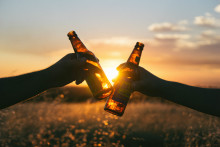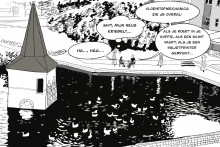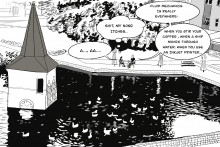The first phenomenon that is explained by Devaraj van der Meer (professor of Physics of Fluids) is something that students are probably very familiar with: the beer volcano.
Boys will be boys, so you will probably have been either the perpetrator or the victim of a beer volcano. Just tap with a beer bottle on another (full) beer bottle, and the beer in the lower bottle will start to foam in no time. But how does this actually work?
Van der Meer explains that this prank consists of three phases: 'There is a shock wave in the glass, which creates an underpressure at the bottom of the beer bottle. This results in cavitation bubbles in the underpressure. These bubbles mainly contain water vapour. When the pressure increases, the bubbles implode, creating many micro fragments. This first phase lasts a few hundred microseconds.'
The second phase takes a little longer (a few milliseconds), but is still much faster than the blink of an eye. Van der Meer: 'The movement in random directions causes the bubble to increase in size. This is because they are in a fluid that is supersaturated with C0₂. They become gas bubbles.'
This brings us to the actual eruption of the beer volcano, which lasts approximately one second, the professor explains. 'The bubbles are exposed to gravity, which makes them rise. And that is not all, they also enter 'new' water that is saturated with C0₂. This increases and accelerates the growth of the bubbles. In this phase, the bubbles rise quickly, forming the foam that comes out of the bottle.'
What about the beer in the upper bottle? 'No eruption, because there is no reflection of the shock wave in the fluid.'
Although in nine out of ten cases the phenomenon is just a bit of mischief, it does not only occur in pubs. In 1986, a similar effect in a crater lake in Cameroon cost over 1700 human lives. 'But it can also have implications elsewhere,' Van der Meer says. 'For example in the extraction of oil, which is also an supersaturated fluid.'
This article was also in the first edition of our Science Magazine.








